For my newest altered book project, I plan to make a junk journal for October. In it, I’ll combine cast-off papers and wrappers and other bits of ephemera with my journal entries and amateur art attempts. I’ve been wanting to try a junk journal for a while. I think October will be an especially fun month to start it because of all the candy wrappers I’m clearly going to collect!
Altering a book to use as a journal requires more than just scoring the perfect ancient tome. After you do a price check to make sure you’re upcycling trash, not destroying a national treasure, you have to physically prepare the book to receive your art, writing, and ephemera.

First, remove 50%-70% of the book’s pages by literally ripping or cutting them out of the book. Everything that you’ll do to your altered book will add volume to the pages, so you need to remove most of those pages before you even start to avoid having your finished book look overstuffed. An overstuffed book is difficult to store. The additional pressure on the binding will also cause it to fall apart before its time.
Once you’ve got most of the pages out of the way, try one or more of the following techniques to make useful and attractive background pages for your art:
Gesso

Gesso is a good all-purpose material for blanking out a page. Depending on how many coats you use, gesso can completely cover all of a page’s printing or it can just be a translucent layer over it. It also thickens the page, which makes it sturdier, and it serves as a barrier so that paint and glue won’t soak through the page.
Gesso’s texture on the page depends on the tool that you use to apply it. For the smoothest application, use a palette knife. For a more textured look, use a paintbrush. As with all the paint and glue applications in this tutorial, place a sheet of wax paper behind the page that you’re working on to keep gesso from getting on the adjacent pages. Afterwards, let the page air dry until it’s no longer tacky. If you need to turn the page or close the book, keep a sheet of wax paper over the gesso.
You should be able to remove the wax paper after the gesso is fully dry (check the manufacturer’s instructions), but I like to cut wax paper to size and keep the sheets permanently between the painted or glued pages of my altered books. I’ve found that high humidity can make formerly bone-dry pages stick together even years later, so ditching the wax paper just isn’t worth the inevitable disappointment.
Gesso works best with paint, most permanent markers, and glue. It doesn’t work well with pens, pencils, crayons, or watercolors. I also like to use gesso to white-out mistakes or build another layer on a previously-placed embellishment.
Ballpoint Pen
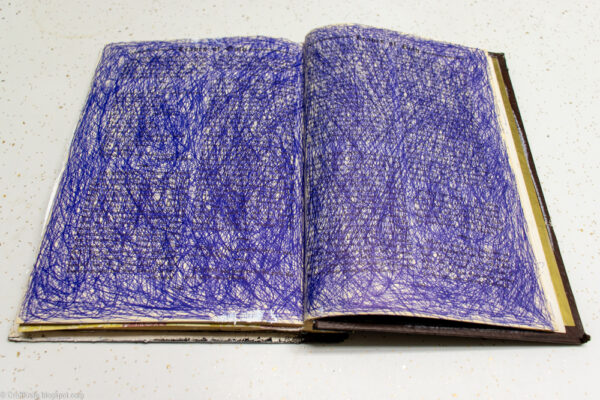
Take a ballpoint pen from the junk drawer, start an episode of your favorite sitcom, and scribble away until you’ve completely covered the page! This makes a surprisingly versatile background that you can then further embellish with permanent marker, watercolor, collage or paint. Use gesso to paint speech bubbles, or collage patterned paper to frame ephemera.
Unfortunately, most ballpoint pens are not archival, but most of the ephemera that I’ll be including in my junk journal won’t be archival, either.
Collage
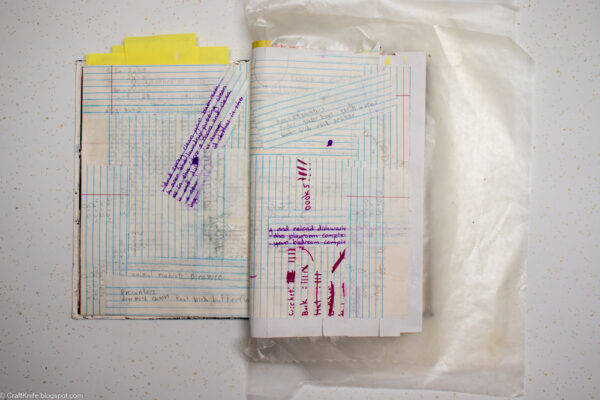
When preparing the pages of an altered book, consider using matte medium instead of glue. Use matte medium to glue book pages together to make a thicker, sturdier surface to embellish, or use it as I’m doing here, to collage other papers onto a page. This, again, makes the page thicker and sturdier.
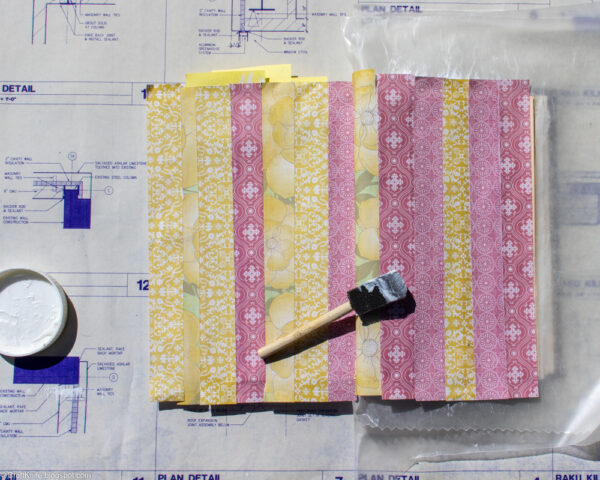
The paper that you use for your collage will determine what embellishments you can put over it, although you should be able to paint, write, draw, color, and glue over most papers. If your papers are fairly light-colored, you can add most of these embellishments directly to the page; if the papers are colorful, as in the photo above, consider painting a thin layer of gesso on top to lighten the color.
Another option with collage is to add papers solely to create an interesting layered texture on the page. Afterwards, use gesso to create a clean surface that’s ready for embellishment.
Even after these collaged pages are bone-dry, I still keep a sheet of wax paper between every page. Opening up an altered book years later to find that at some point the glue has rehydrated and stuck some of your beautiful pages together is VERY disappointing!
Folders
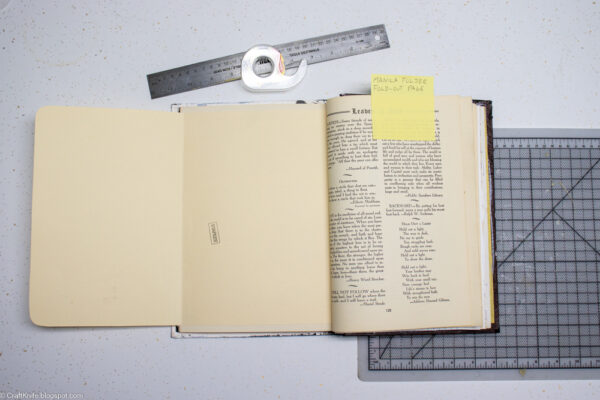
A file folder is an easy way to extend a page. Just cut it to size, then use double-sided tape to adhere it to the book page, with the fold facing the fore-edge. Open the folder, and you have double the page width to work with!
Most file folders are thick and plain enough that you wouldn’t necessarily have to prepare them for embellishment, but you can use any of these preparation methods on them, of course. Gesso or collage, in particular, would be good ways to mask the difference between the folder and the facing page.
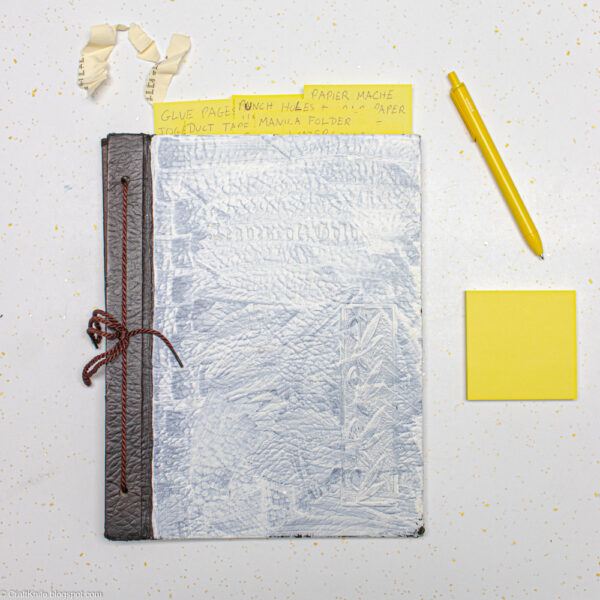
You can also use most of these techniques to prepare the book’s cover and spine for embellishment. I’m not sure yet what I want to do with my book cover, so in the photo above I gave it just one coat of gesso as a starting point. Hopefully, inspiration will strike before my month of junk journaling is over!

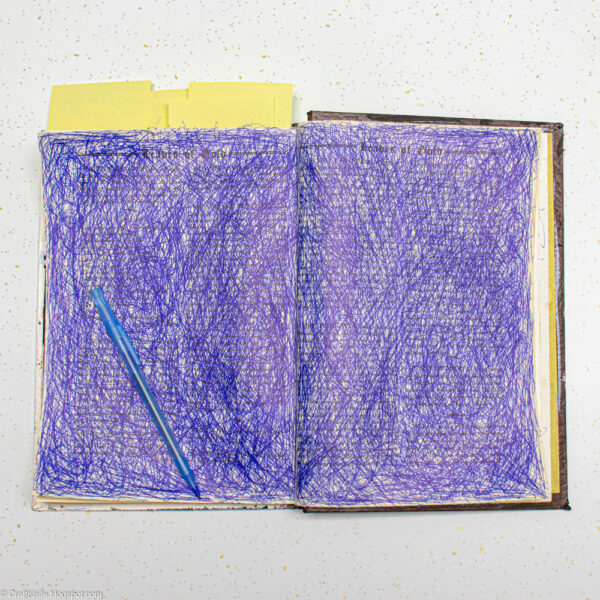
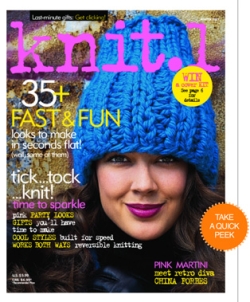



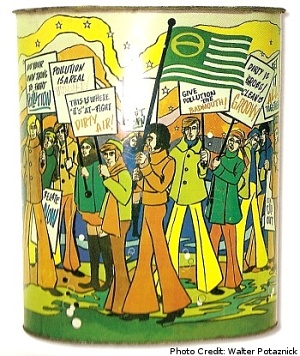

Great how to, especially the tips on gesso and wax paper. Thank you.
Excellent! I love altered books and have altered an old Italian book into a journal of a holiday i had in that country. I should do more though.
Have you seen https://www.youtube.com/@Dream_Fairy_DIY ? They have some AMAZING ideas for covering a notebook among loads of other amazing ideas!
Okay, I’m obsessed with this channel now. Thank you!